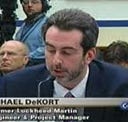FAA making a grave error in granting autonomous drone waivers to develop in the public domain
The FAA has been granting Part 107 waivers to autonomous drone or UAV makers for the past two months. This waiver allows companies like Amazon to develop and test their systems in the public domain. I can find no objective criteria for simulated testing as a bar to honor the waiver. That means the FAA, like NHTSA, is going down an incredibly reckless road. They are making the assumption that shadow or public safety driving or flying is the best or even a tenable method for developing and testing these systems. And that the lives that have been lost (only in automobiles to date), and the many more that will be lost when accident scenarios are trained, are for the greater good. None of that is remotely true.
It is impossible to fly the miles or spend the money needed to stumble and restumble on all the scenarios necessary to complete the effort. In addition, the process harms people for no reason. This occurs two ways. The first is through handover or fall back. A process that cannot be made safe for most complex scenarios, by any monitoring and notification system, because they cannot provide the time to regain proper situational awareness and do the right thing the right way, especially in time critical scenarios. The other dangerous area is training the systems to handle accident scenarios. In order do that autonomous drone makers will have to run thousands of accident scenarios thousands of times. that will cause thousands of injuries and deaths.
The FAA taking this tact is extremely disappointing given their history, the 6.4 Sigma rating of air travel in the US and at least parts of that organization being involved in promoting simulation and ensuring the simulation and models companies are using to develop and test their systems have the requisite fidelity or precision. Yes, this is in spite of the Boeing ordeal. (Which appears to be a Boeing leadership issue. Even if the FAA did drop the ball here that, while very troubling, does not negate their excellent track record. Having said that this fatally flawed decision will wind up making them look beyond incompetent and reckless.)
The solution here, as it is with autonomous vehicle development and testing, is to use aerospace/DoD simulation technology and systems/safety engineering for most of the development and testing. (Not gaming engine-based systems as they have significant real-time and model fidelity flaws in complex scenarios). Unlike the autonomous vehicle makers the FAA knows this or at least the part of it that deals with aircraft simulation. (Did the FAA hire outside that industry for the UAV side? Possibly the same IT folks making the same egregious engineering errors in the autonomous vehicle industry?) If the FAA does not regroup they may wind up tarnishing their reputation for a very long time.
7–15–2019 — I just talked to the FAA UAV group who handles the waivers etc. They tell me the pilots maintain LOS the whole time and there is no autonomous flight going on yet. That is not what I am reading. Of course my concern is the FAA is overly trusting. While I could be making Amazon and even Uber’s drone side pay for the sins of the AV world. I think the odds I am right are far better than that I am wrong. Which I would truly wish was not the case. https://techcrunch.com/2019/06/05/a-first-look-at-amazons-new-delivery-drone/
More in my autonomous vehicle articles here
Proposal for Successfully Creating an Autonomous Ground or Air Vehicle
Using the Real World is better than Proper Simulation for Autonomous Vehicle Development — NONSENSE
SAE Autonomous Vehicle Engineering Magazine-End Public Shadow Driving
Common Misconceptions about Aerospace/DoD/FAA Simulation for Autonomous Vehicles
The Hype of Geofencing for Autonomous Vehicles
How Driverless Vehicle Makers Should Prove their Technology Works —
My name is Michael DeKort — I am a former system engineer, engineering and program manager for Lockheed Martin. I worked in aircraft simulation, the software engineering manager for all of NORAD, the Aegis Weapon System, and on C4ISR for DHS.
Key Autonomous Vehicle Industry Participation
- Lead — SAE On-Road Autonomous Driving SAE Model and Simulation Task and a member of the V&V Task Force
- Expert — DIN/SAE International Alliance for Mobility Testing & Standardization (IAMTS) group to create sensor simulation specs
- Stakeholder for UL4600 — Creating AV Safety Guidelines
- Presented the IEEE Barus Ethics Award and am member of the IEEE Artificial Intelligence & Autonomous Systems Policy Committee (AI&ASPC)
My company is Dactle
Autonomous Vehicle L5 Aerospace/DoD Development and Verification System
Safe, ethical and efficient creation and verification of Autonomous Vehicles
